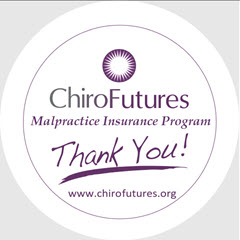RISK MANAGEMENT MINUTE – A Critical Look at Upper Cervical Adjusting Techniques and the Importance of Diligent Care

In the realm of chiropractic care, particularly among practitioners who specialize in specific upper cervical adjusting techniques such as NUCCA, Blair, Grostic, Toggle and many others, there exists a common misconception. Many chiropractors believe that because these specific upper cervical methods do not involve twisting, popping, cracking etc of the cervical spine, the risk of causing or exacerbating conditions like dissection and stroke is significantly reduced. However, this belief overlooks a crucial aspect of patient care: the ability to recognize and appropriately respond to strokes and dissections that are already in progress.
The Underlying Issue
The concern isn't that chiropractic adjustments cause strokes or dissections – research has largely dispelled this myth. The real risk lies in failing to identify these serious conditions when they are already in progress and present themselves in patients. Such an oversight can lead to malpractice lawsuits, not for causing the condition, but for missing the signs and failing to take appropriate action.
A Case in Point
Consider the situation of a chiropractor who had a patient who had recently had hip surgery presenting with vertigo following a visit. The patient, with a history of vertigo and a stroke in the previous year, was adjusted using NUCCA technique. The chiropractor contacted us to get advice about how to handle the concern by the patient and when asked about ruling out vascular issues felt there was no cause for concern because of the technique he used.
The Role of ChiroFutures Malpractice Insurance Program
This scenario underscores the importance of thorough patient evaluation and risk management, areas where the ChiroFutures Malpractice Insurance Program plays a vital role. We advocate for a comprehensive approach to patient history and evaluation, emphasizing the need for chiropractors to be vigilant in screening for potential vascular risks (especially in the age of spike proteins and their affects on the vascular epithelium).
Proactive Measures for Practitioners
For chiropractors, including those practicing specific upper cervical techniques, it's imperative to not only understand the anatomy of the vascular supply but also to recognize the signs and symptoms of stroke or vertebral artery dissection (VAD). This knowledge is critical for timely referral to medical professionals when necessary.
The Bottom Line: Awareness and Preparedness
The key takeaway for chiropractic practitioners is twofold. First, it is essential to have comprehensive malpractice insurance coverage that understands the nuances of chiropractic care, like that provided by ChiroFutures. Other malpractice programs ae either run or overseen by non-chiropractors who do not know or understand the nuances of chiropractic practice such as technique. Second, and perhaps more importantly, chiropractors must remain vigilant and informed about the signs of stroke, dissection and other vascular issues, regardless of their chosen adjustment techniques. Having a good malpractice provider is not just about having support in the face of legal challenges; it's about having a resource to guide and educate practitioners in providing the safest and most effective care to their patients by those who actually understand and practice the profession.
In conclusion, while upper cervical adjusting techniques may not directly cause strokes or dissections, the role of the chiropractor extends beyond the adjustment. It encompasses a responsibility to recognize and act upon the early signs of these conditions, ensuring patient safety and mitigating the risk of malpractice claims. This level of vigilance and preparedness is what ultimately defines excellence in chiropractic care.

Blogs
- The Chiropractic Cartel: A Look Back at Bias in Accreditation and its Imact on Today's Profession
- Inside Montana's Chiropractic Monopoly: ACA & MCA's Brazen Board Takeover
- Concerns Grow About Control of the NY State Chiropractic Board by the ACA - Use of X-ray in NY Under Threat
- Reproductive Health Information and Chiropractic Care: Navigating New Privacy Regulations
- Navigating Substance Use Disorder (SUD) Consent: What Chiropractors Need to Know













